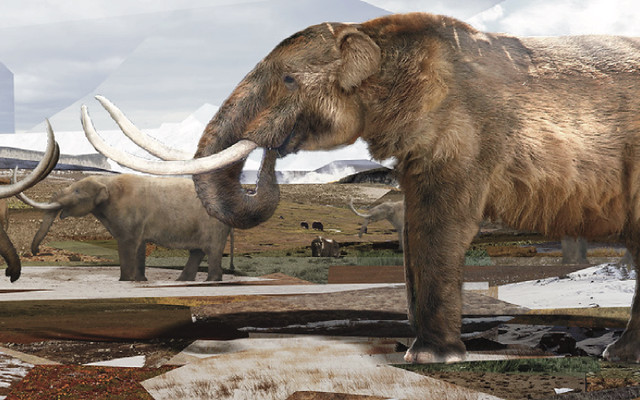Mastodons (Greek: μαστός “breast” and ὀδούς, “tooth”) are any species of extinct proboscideans in the genus Mammut (family Mammutidae), distantly related to elephants, that inhabited North and Central America during the late Miocene or late Pliocene up to their extinction at the end of the Pleistocene10,000 to 11,000 years ago.[1] Mastodons lived in herds and were predominantly forest dwelling animals that fed on a mixed diet obtained by browsing and grazing with a seasonal preference for browsing, similar to living elephants.
M. americanum, the American mastodon, is the youngest and best-known species of the genus. They disappeared from North America as part of a mass extinction of most of the Pleistocene megafauna, widely believed to have been related to overexploitation by Clovis hunters, and possibly also to climate change.
(From Wikipedia, June 2018)




